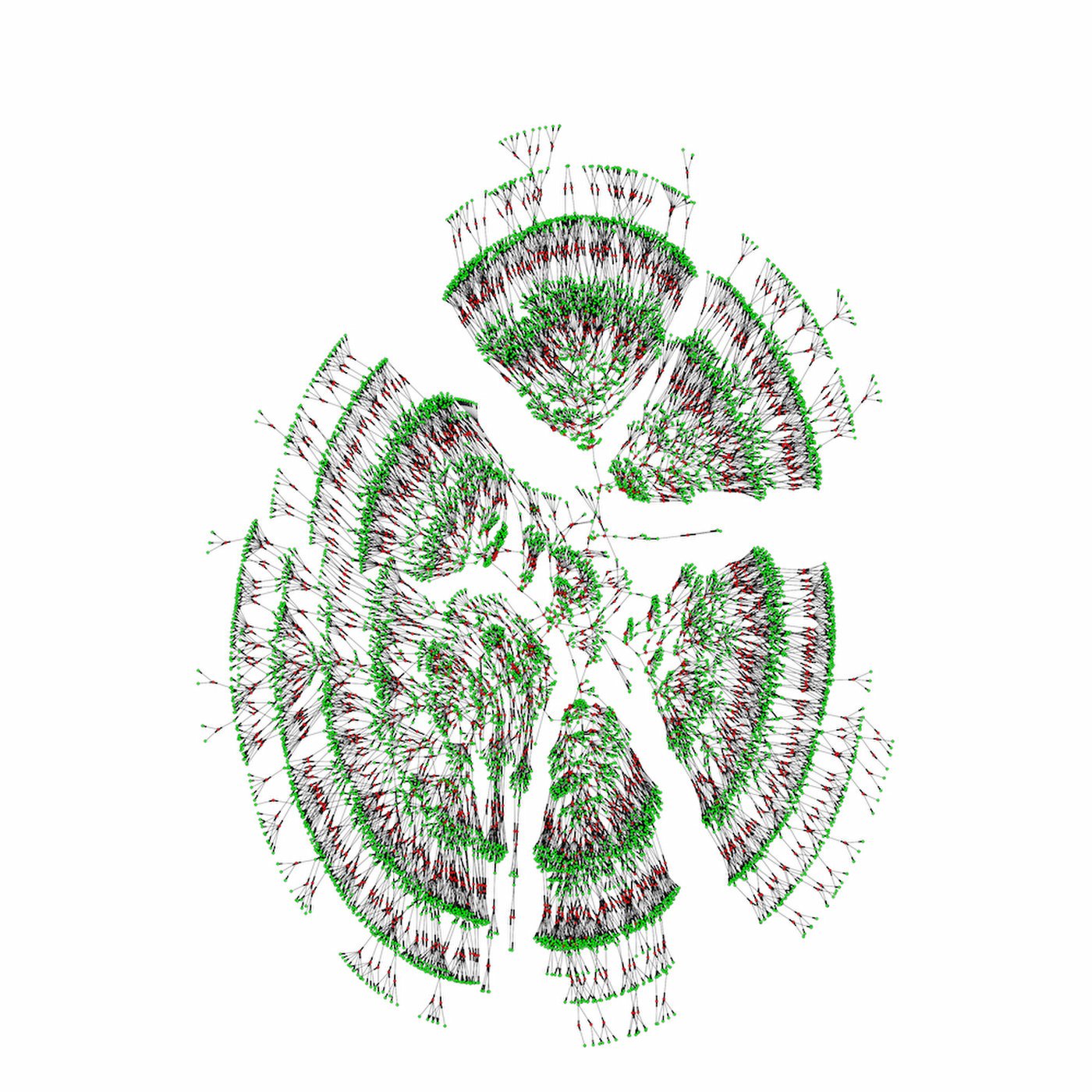Researchers at Columbia University have created the world’s largest family tree using the records of around 13 million people.
The world’s largest family tree gives us a unique insight into our common origins. While it doesn’t extend far enough back to give us all a common ancestor, it does connect many families from around the world in a massive, branching tree that dates back around 500 years of North American and European history.
The world’s largest family tree was created by Yaniv Erlich – a computer scientist at Columbia University – and his colleagues, who downloaded 86 million public profiles from the website Geni.com, which is one of the biggest databases for genealogy worldwide.
In order to sort through this massive amount of data and create the world’s largest family tree, Erlich and his collaborators used a form of mathematical analysis in order to organize the various family connections, connecting the dots in order to create a massive web that extended around 11 generations on average. This data documented births, deaths, and marriages for hundreds of years and showed common origins for a lot of families that don’t have any modern connection. The researchers report that if the data went back another 65 generations, we might actually have been able to see a common ancestor for this entire data set. That sort of data was beyond the scope or capabilities of this project, but it’s an interesting reminder that we’re all connected if you go back far enough.
In a recent statement, Erlich and his collaborators described the study that brought about the world’s largest family tree.
“Family trees have vast applications in multiple fields from genetics to anthropology and economics…However, the collection of extended family trees is tedious and usually relies on resources with limited geographical scope and complex data usage restrictions….Through the hard work of many genealogists curious about their family history, we crowdsourced an enormous family tree and boom, came up with something unique…We hope that this dataset can be useful to scientists researching a range of other topics.”
According to the report, published in Science, around 85 percent of the people included in the world’s largest family tree originated in either Europe or North America, which gave researchers keen insight into the connected history of the two regions.
While North America has a native population that has populated the region for thousands of years, a lot of the modern population is built up of immigrants – many of which came over from Europe hundreds of years ago. By connecting this world’s largest family tree, it’s possible to see where families separated by thousands of miles have the same ties when you go back before the times of North American colonization.
The dataset collected as this team built the world’s largest family tree provides a number of interesting tidbits, such as the fact that before 1750, the majority of Americans found their spouse within 6 miles of their birthplace. By 1950, this distance had increased to 60 miles, and as time goes on and transportation becomes more viable, the distances remain much larger than we saw during North American infancy.
We also saw the end to marrying close relatives around 1850, with increased transportation capabilities making it easier to find a spouse that wasn’t a distant (or sometimes not-so-distant) cousin. This led to the population becoming more and more diverse, and causing the world’s largest family tree to gain more and more branches as it came closer to present day. In 2018, familial connections have been spread wide open and we have a number of very-distant relatives with whom we have no connection. As the world gets more interconnected, our family ties grow farther apart, and one of the team’s goals with this research was to find a common ground from which North American and European people originated.
Moving forward, it will be interesting to see if we can do a similar sort of world’s largest family tree for families outside of North America and Europe. Comparing the migration patterns and family ties of Asian countries with North American and European countries, for example, may give us a better idea how cultural differences affect our genealogy.



